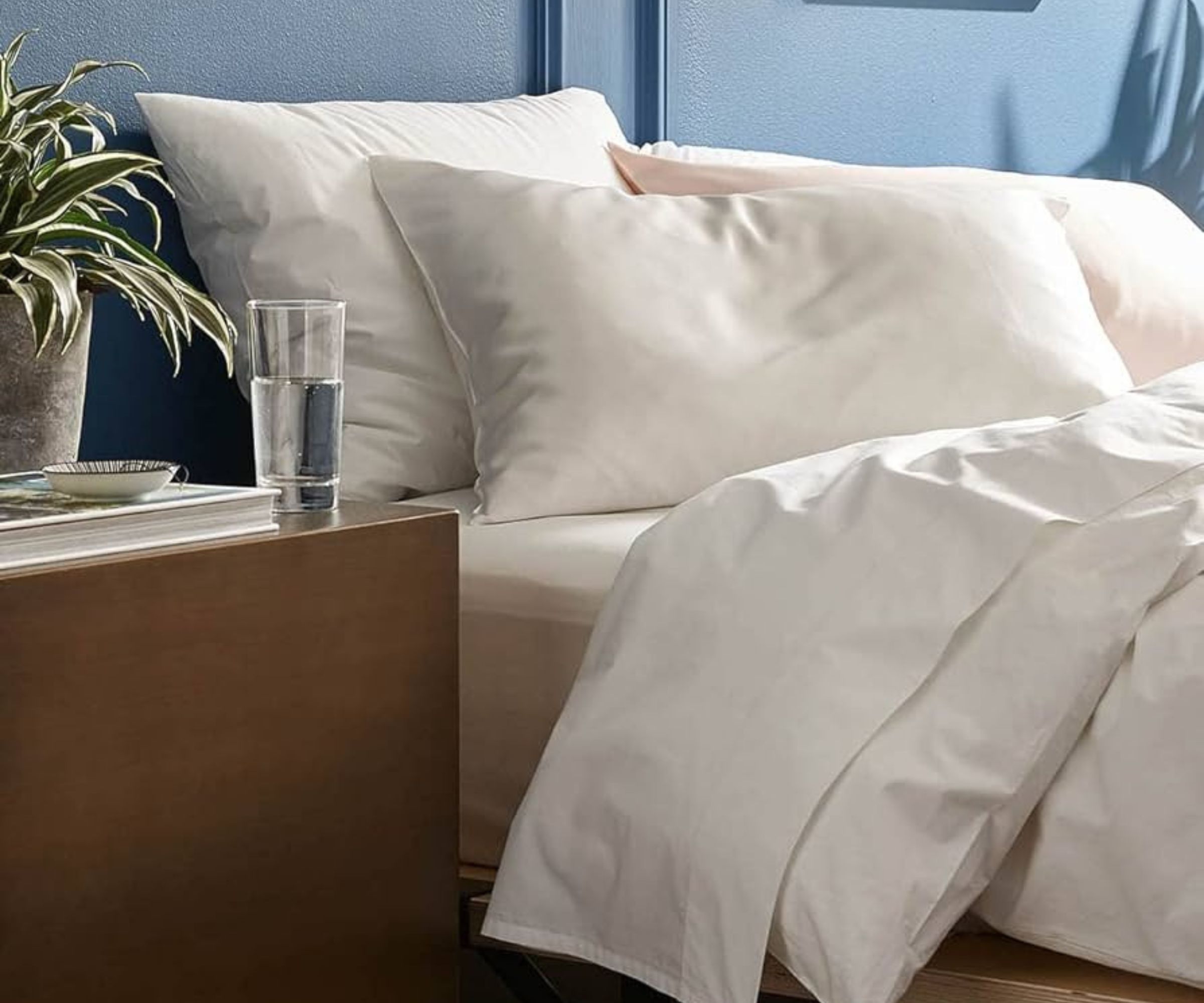Laundry experts reveal the 5 things you should never iron – and what to do instead
Keep these things as far away from the iron as possible, cleaning pros urge


Ironing is a chore many consider essential to keep clothes looking neat and presentable. However, not every item can withstand being ironed laundry experts warn, and can end up with burn marks or their appearance otherwise ruined.
From delicate materials to textured fabrics, knowing what not to iron is just as important as knowing how to iron properly if you want to avoid irreversible damage.
Here, laundry pros walk us through the five items you should never iron after doing laundry to help you protect your best clothes and linens.
5 things you should never iron
Brush up on how to unwrinkle clothes without an iron for these five categories and preventing avoidable headaches.
1. Delicate fabrics like silk or lace

A good rule of thumb is the more delicate the fabric, the more likely it is you cannot iron it. Washing silk sheets, for instance, requires cool temperatures throughout, so it is best not to use a hot iron on it afterwards.
Salvador Villarreal, dry cleaning pro at VIP Cleaners Delivery, says, ‘As an experienced dry cleaner, I never iron certain delicate fabrics like silk, lace or chiffon – the high heat can damage them. Instead, I gently steam these fabrics to relax wrinkles without harming the material.’
Garment steamers are generally considered one of the best ways to get wrinkles out of clothes, and for when you do need to iron bedsheets, too. Not only are they more delicate than an iron, but they also help sanitize clothes you can't wash on high heats and reduce odors.
Design expertise in your inbox – from inspiring decorating ideas and beautiful celebrity homes to practical gardening advice and shopping round-ups.

This handheld garment steamer is great for quickly treating wrinkles without the need for an iron. Reviewers praise it for being 'light and comfortable to hold and use,' but mention that when steaming lots of items in one go, it needs frequent refilling. Nevertheless, they would recommend it to friends.
2. Gym clothes

Gym clothes, or any garments made out of spandex or Lycra, do not need ironing. The nature of the fabric means they are stretchy and form-fitting, meaning they don’t hold wrinkles and ironing is a waste of time. Beyond that, ironing stretch fabrics can damage their flexible properties, making them stiff and reducing their lifespan.
3. Stained clothes

One of the most important golden rules of stain removal is to never iron over a stain. The high direct heat will set the stain into the fibers making it nearly impossible to remove later.
Gwil Snook, laundry expert at AO, says, ‘Whether they’re from paint or food, it’s essential to treat stains as quickly as possible. You can either use a dedicated stain remover or a mixture of water and bicarbonate of soda [such as Arm & Hammer Baking Soda, from Walmart], letting the paste sit on the stain for at least one hour before washing.'
4. Textured fabrics like wool, velvet, or corduroy

Wool, velvet, and corduroy are delicate textured fabrics that should be kept away from high temperatures. Not only does it risk shrinking the fibers, but it can flatten the textures, dulling their appearance, shortening their lifespan, and leaving behind visible marks and burns.
Laundry experts at Miele say, ‘High temperatures can shrink or damage delicate fabrics. Sticking to low temperatures (cold or warm) is safer for wool, cashmere, and embellished garments.'
Miele tumble dryers with PerfectDry monitor moisture levels for an accurate dry, and the AntiCrease function reduces the need for ironing by gently loosening laundry.
Always make sure you check the care symbols on your items before drying, regardless of a cycle's features.
5. Items with embellishments

Any clothing or household linens with embellishments such as crystals, sequins, beads, or prints should be kept away from the iron to avoid melting, warns Vincent Lau, president and CEO of luxury menswear brand Westwood Hart. ‘These items should be ironed with caution, if at all,’ he says.
If you need to remove wrinkles from these items but don’t want to risk the iron, Gwil Snook, a laundry expert, suggests using the best steam cleaner. ‘Handheld steamers are an affordable and space-saving option for removing creases. If you don’t have one, simply hang the items in the bathroom while taking a hot shower. The steam will help release the wrinkles.’

This garment steamer is the highest rated steamer on Amazon, with over 70,000 five star reviews. Users like that the steamer heats up quickly and is easy to store when not in use. They do mention that due to its smaller size, deep creases sometimes take a few passes, but generally, users are happy with the powerful steam nozzle.
If you are ever unsure about whether or not you can iron an item, you can consult the laundry symbols on the care tag.
Vincent Lau, a garment expert adds, ‘For items that can be ironed, it's crucial to use the correct temperature setting. Most garment tags include an iron symbol with dots indicating the appropriate heat level. One dot represents the coolest setting, two dots represent medium heat, and three dots represent the hottest setting. An iron with a cross through it means you should not iron the item.’
Next, learn how to save time when doing your laundry.

Chiana has been at Homes & Gardens for two years and is our resident 'queen' of non-toxic living. She spends most of her time producing content for the Solved section of the website, helping readers get the most out of their homes through clever decluttering, cleaning, and tidying tips. She was named one of Fixr's top home improvement journalists in 2024.
